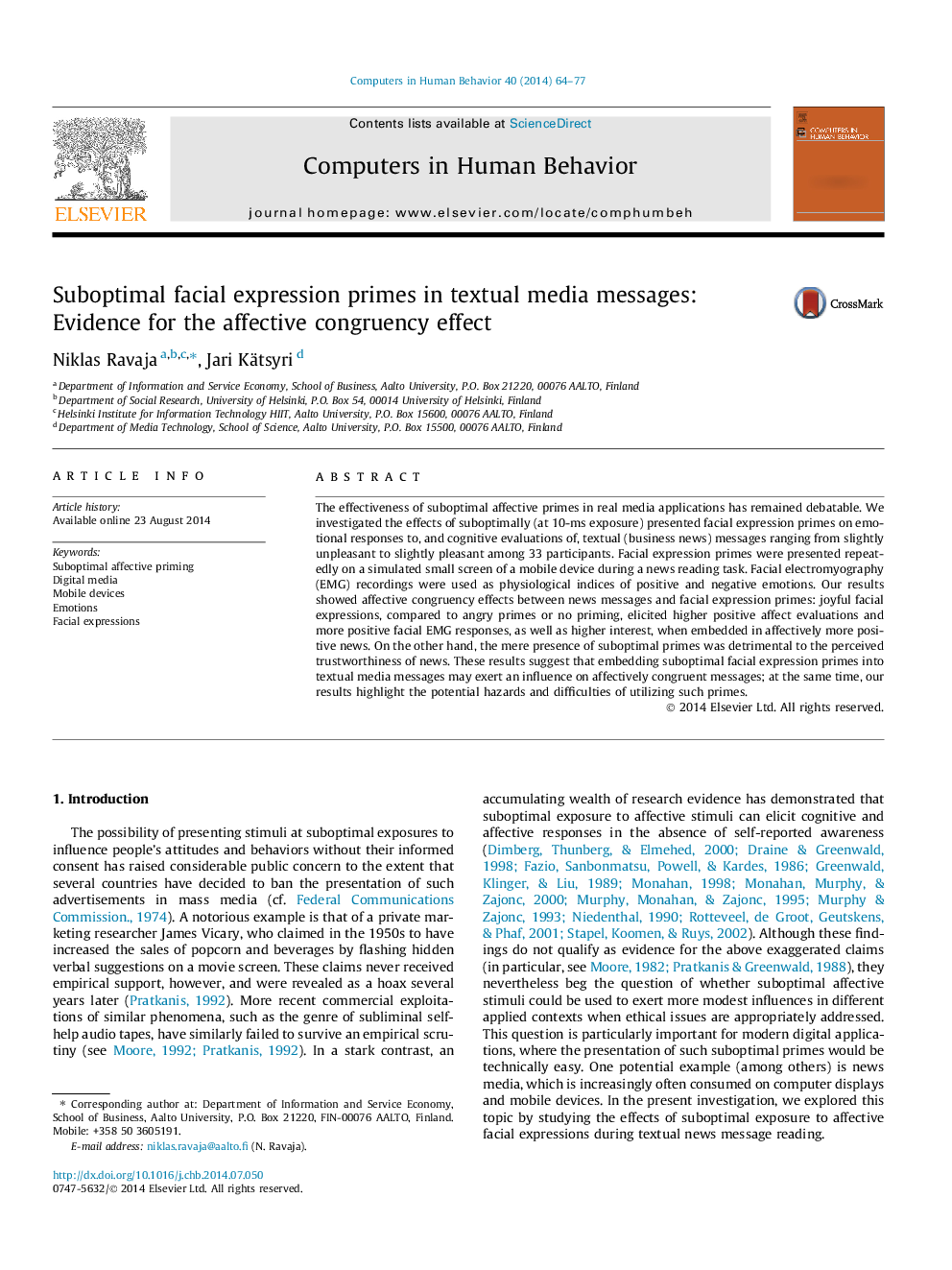| Article ID | Journal | Published Year | Pages | File Type |
|---|---|---|---|---|
| 350436 | Computers in Human Behavior | 2014 | 14 Pages |
•Suboptimal joyful primes increased positive emotions only for positive messages.•Angry facial primes tended to increase trust in negative news messages.•In general, the presence of primes decreased perceived trustworthiness.•Joyful primes elicited better recall of messages than angry or neutral primes.•Periocular muscle activity was higher for positive compared to negative messages.
The effectiveness of suboptimal affective primes in real media applications has remained debatable. We investigated the effects of suboptimally (at 10-ms exposure) presented facial expression primes on emotional responses to, and cognitive evaluations of, textual (business news) messages ranging from slightly unpleasant to slightly pleasant among 33 participants. Facial expression primes were presented repeatedly on a simulated small screen of a mobile device during a news reading task. Facial electromyography (EMG) recordings were used as physiological indices of positive and negative emotions. Our results showed affective congruency effects between news messages and facial expression primes: joyful facial expressions, compared to angry primes or no priming, elicited higher positive affect evaluations and more positive facial EMG responses, as well as higher interest, when embedded in affectively more positive news. On the other hand, the mere presence of suboptimal primes was detrimental to the perceived trustworthiness of news. These results suggest that embedding suboptimal facial expression primes into textual media messages may exert an influence on affectively congruent messages; at the same time, our results highlight the potential hazards and difficulties of utilizing such primes.
